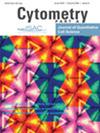Novel Spectral High-Dimensional Flow Cytometry Assay for Combinatorial MHC Class I Tetramer Staining and Deep Antigen-Specific CD8+ T Cell Phenotyping
Abstract
Cytotoxic CD8+ T cells eliminate virus-infected or cancer cells, thus playing a pivotal role in anti-viral and anti-cancer immunity. Tetramer reagents, which consist of fluorochrome-labeled streptavidin coupled with peptide-loaded MHC I molecules, enable the detection of antigen-specific CD8+ T cells using flow cytometry. The development of tetramer reagents has been instrumental for our understanding of antigen-specific CD8+ T cells and their roles in immune responses. More recently, combinatorial tetramer staining protocols have enabled the simultaneous detection and monitoring of multiple specificities and concomitant pathogen-dependent CD8+ T cell dynamics. However, these methods are either based on mass cytometry, preventing the isolation of antigen-specific CD8+ T cells for downstream investigation, or have provided a less comprehensive picture of the phenotypic characteristics of antigen-specific CD8+ T cells when based on flow cytometry. Here we describe the development of a combinatorial tetramer staining protocol in combination with high-dimensional CD8+ T cell immunophenotyping in the context of virus-specific CD8+ T cells leveraging spectral flow cytometry. Our assay enables the simultaneous measurement of 15 different CD8+ T cell specificities and includes an additional 18 markers to define the phenotypic and functional characteristics of antigen-specific CD8+ T cells. We describe our assay optimization strategies, with the goal of improving marker and tetramer resolution while eliminating sources of background noise. Finally, we apply this method to reveal the phenotypic heterogeneity of virus-specific CD8+ T cells against common viral pathogens in healthy individuals.


 求助内容:
求助内容: 应助结果提醒方式:
应助结果提醒方式:


